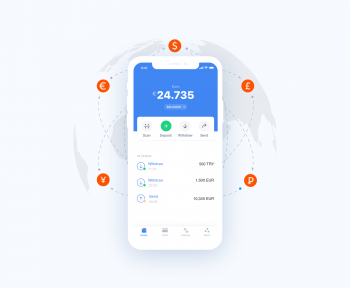Compared to a standard international payment, SEPA payment is a simpler and cheaper way to make Euro payments between the countries within this agreement.
What is a SEPA Transfer?
A SEPA transfer is an international transfer made through the Single Euro Payments Area (SEPA), a European Union (EU) initiative for harmonising payments across Europe. The goal is to simplify cross-border money transfers in Euros. In several ways, a SEPA transfer is similar to a domestic transfer, as the banks and financial institutions that support SEPA payments either have direct relationships with other banks or a network of intermediary banks, enabling seamless transfers across international borders.
Within SEPA transfers, the European Payments Council (EPC) has created different SEPA payment schemes to match the various needs of people looking to use the network. These are SEPA Direct Debit (which includes both a ‘core’ and a ‘B2B’ service) and SEPA Credit Transfer.
How much do SEPA transfers cost?
You pay the same cost for a SEPA transfer as you would pay for a domestic transfer. Some financial institutions may charge a nominal fee, so it is important to check with your bank or e-wallet just in case. There cannot be different charges levied based on location. This means, if you are making a transfer from your UK bank account, you will pay the same price whether you send funds to a UK account or a Swedish account.
How do SEPA transfers work?
A SEPA transfer is similar to a domestic transfer. Here is an example on how SEPA transfers work:
Assume that Daniel is sending Elena €100, and both sending and receiving banks are part of SEPA. When Daniel initiates the transfer, Elena’s bank will debit €100 in her account. Daniel’s bank will then credit the recipient’s commercial account held with the sender’s bank by €100.
In case both the banks do not have an established relationship, as they had in the above example, the transaction will occur through a central bank account/intermediary account in Europe. Therefore, once Daniel’s account has been debited, his bank will credit the amount in the intermediary bank, which will in turn credit Elena’s bank with €100. Finally, Elena’s bank will credit her account with €100.
Basically, SEPA transfers work just like a regular bank transfer, only the money is transferred overseas and exclusively in Euros.
How to make a SEPA transfer?
SEPA utilises each person’s International Bank Account Number (IBAN) to enable transfers between different bank accounts. To make a SEPA payment, you will need:
- The IBAN of the person you are sending money to
- To make sure that the bank which you are sending money to is a member of the SEPA
- To make a SEPA transfer, you need to log in to your bank or payment provider account and set up the transfer as you normally do. Add the recipient by providing the required details, add the IBAN of the recipient’s bank account and pay for your money transfer. The bank or transfer provider will pay the recipient in Euros.
Send and receive money internationally With Jeton Business
Get EUR IBAN to manage your international payments and money transfers without hidden fees. Hold, send and receive money through your account.



